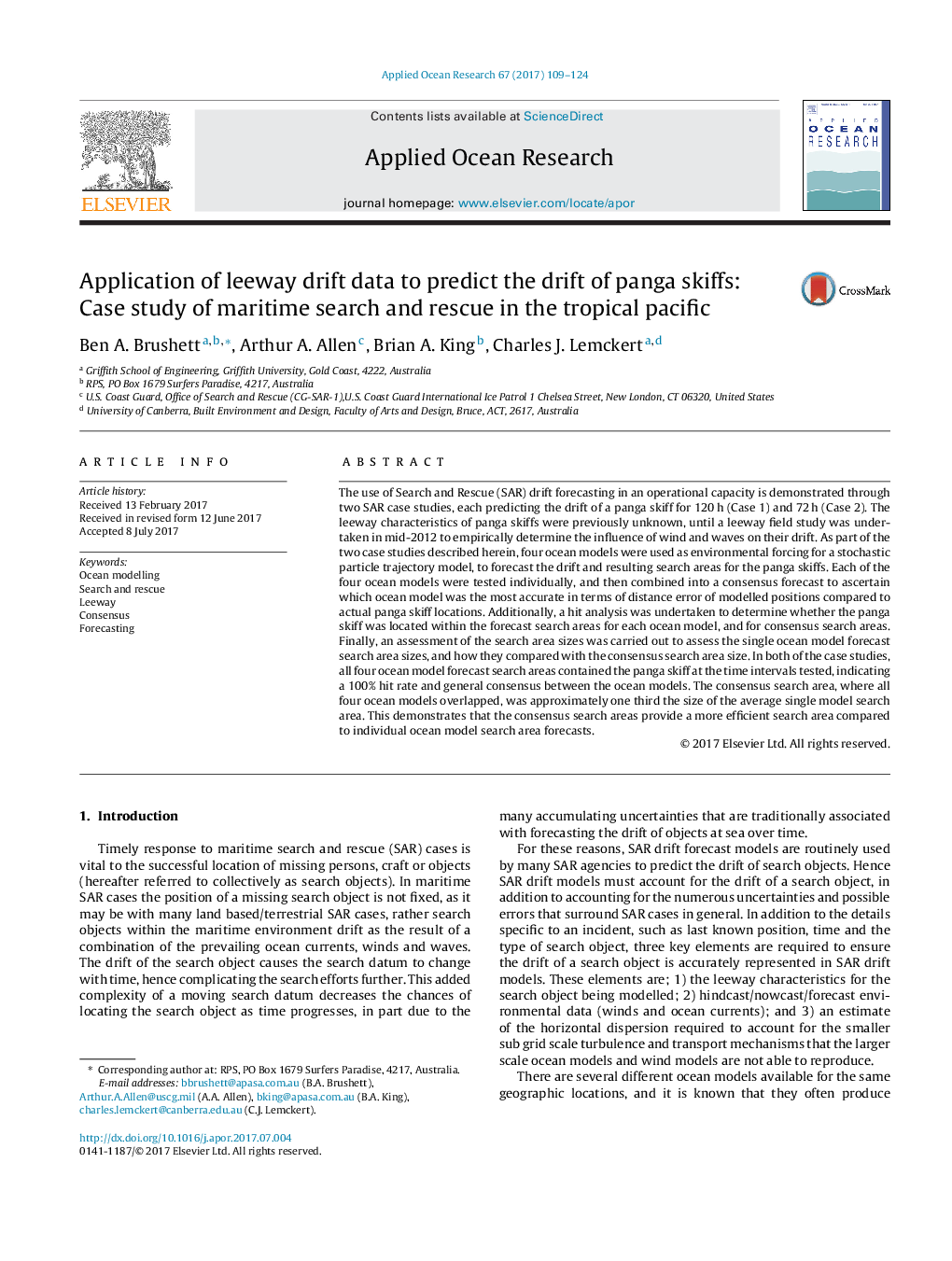| کد مقاله | کد نشریه | سال انتشار | مقاله انگلیسی | نسخه تمام متن |
|---|---|---|---|---|
| 5473273 | 1520236 | 2017 | 16 صفحه PDF | دانلود رایگان |
عنوان انگلیسی مقاله ISI
Application of leeway drift data to predict the drift of panga skiffs: Case study of maritime search and rescue in the tropical pacific
ترجمه فارسی عنوان
استفاده از داده های ریاضی ریوی برای پیش بینی رانش ماهواره های پنگا: مطالعه موردی جستجو و نجات دریایی در مناطق گرمسیری صخره ای
دانلود مقاله + سفارش ترجمه
دانلود مقاله ISI انگلیسی
رایگان برای ایرانیان
کلمات کلیدی
مدل سازی اقیانوس، جستجو و نجات، لیو، اجماع، وفاق، پیش بینی،
موضوعات مرتبط
مهندسی و علوم پایه
سایر رشته های مهندسی
مهندسی دریا (اقیانوس)
چکیده انگلیسی
The use of Search and Rescue (SAR) drift forecasting in an operational capacity is demonstrated through two SAR case studies, each predicting the drift of a panga skiff for 120Â h (Case 1) and 72Â h (Case 2). The leeway characteristics of panga skiffs were previously unknown, until a leeway field study was undertaken in mid-2012 to empirically determine the influence of wind and waves on their drift. As part of the two case studies described herein, four ocean models were used as environmental forcing for a stochastic particle trajectory model, to forecast the drift and resulting search areas for the panga skiffs. Each of the four ocean models were tested individually, and then combined into a consensus forecast to ascertain which ocean model was the most accurate in terms of distance error of modelled positions compared to actual panga skiff locations. Additionally, a hit analysis was undertaken to determine whether the panga skiff was located within the forecast search areas for each ocean model, and for consensus search areas. Finally, an assessment of the search area sizes was carried out to assess the single ocean model forecast search area sizes, and how they compared with the consensus search area size. In both of the case studies, all four ocean model forecast search areas contained the panga skiff at the time intervals tested, indicating a 100% hit rate and general consensus between the ocean models. The consensus search area, where all four ocean models overlapped, was approximately one third the size of the average single model search area. This demonstrates that the consensus search areas provide a more efficient search area compared to individual ocean model search area forecasts.
ناشر
Database: Elsevier - ScienceDirect (ساینس دایرکت)
Journal: Applied Ocean Research - Volume 67, September 2017, Pages 109-124
Journal: Applied Ocean Research - Volume 67, September 2017, Pages 109-124
نویسندگان
Ben A. Brushett, Arthur A. Allen, Brian A. King, Charles J. Lemckert,
